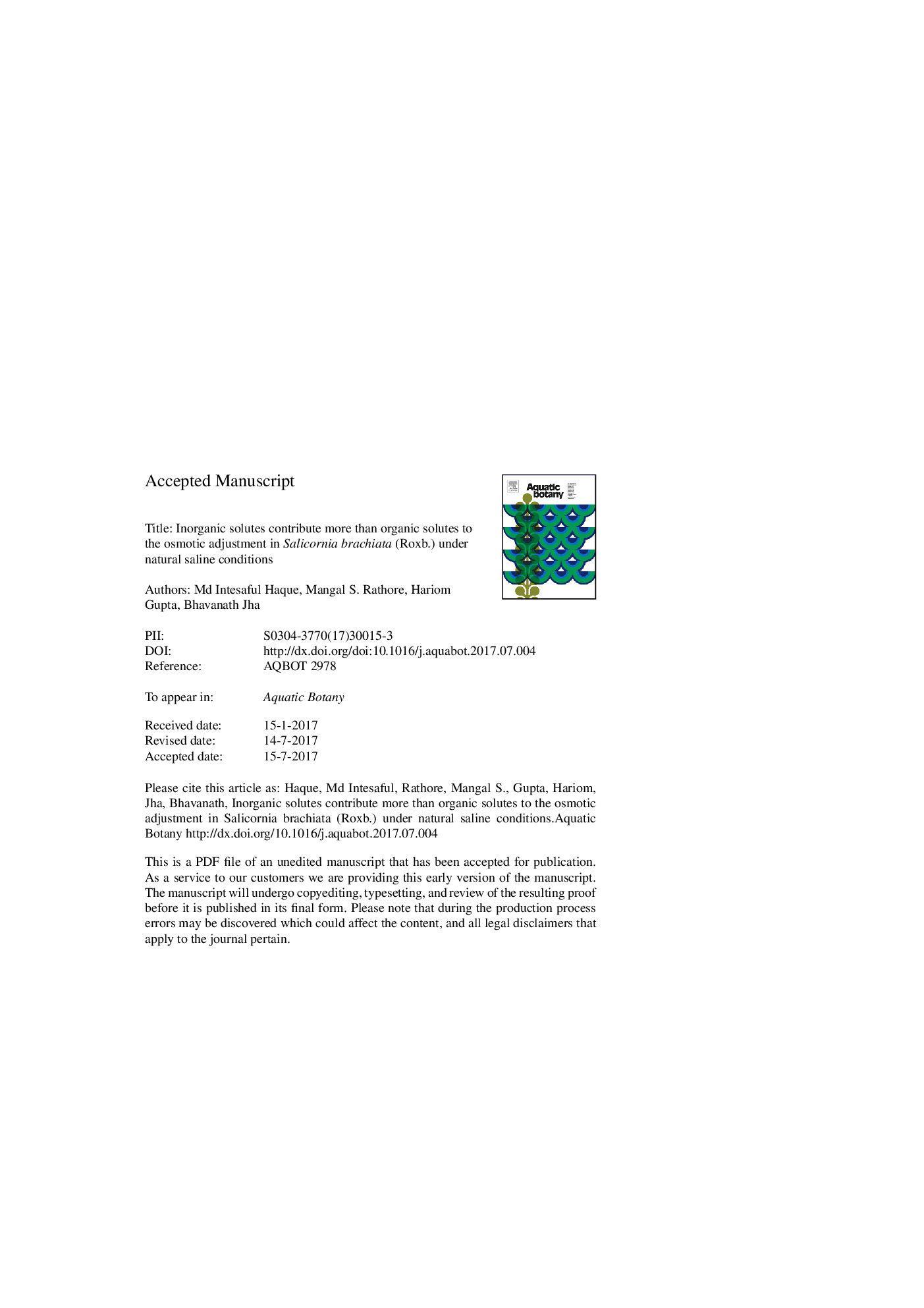| Article ID | Journal | Published Year | Pages | File Type |
|---|---|---|---|---|
| 5763979 | Aquatic Botany | 2017 | 22 Pages |
Abstract
Salicornia brachiata (Roxb.) is an extreme halophyte that grows in the inundated intertidal zone. The osmotic traits were studied in S. brachiata to understand the ecophysiological responses under natural saline condition. The improved growth and biomass yield in S. brachiata under saline conditions proved the true halophytic nature. The relaxometry and diffusion map analysis showed deposition of salt in the outer cortical regions of the stem of S. brachiata with increasing salinity in the greenhouse. The field growing plant did not show any salt deposition. At 100% of seawater salinity level accumulation of total solutes, inorganic- and organic solutes increased 168.47, 177.88 and 28.57% respectively in S. brachiata under greenhouse conditions. While the accumulation of total solutes, inorganic- and organic solutes increased 176.58, 181.73 and 100% respectively in S. brachiata under field condition. The accumulation of solutes helped the plant to maintain the osmotic homeostasis thus salt adaptation. The increase in the contribution of proline (CNTpro) among organic and Na+ (CNTNa) among inorganic solutes to the osmotic adjustment was estimated the highest under saline conditions. The present results supported significantly higher contribution of inorganic solutes than organic solutes to the osmotic adjustment. As the synthesis of organic solutes costs more energy as compared to the uptake of the different inorganic solutes from surrounding and accumulation theirof, thus use of the accumulated inorganic solutes in osmotic homeostasis for salt adaptation in S. brachiata is an energy-efficient process.
Related Topics
Life Sciences
Agricultural and Biological Sciences
Aquatic Science
Authors
Md Intesaful Haque, Mangal S. Rathore, Hariom Gupta, Bhavanath Jha,
